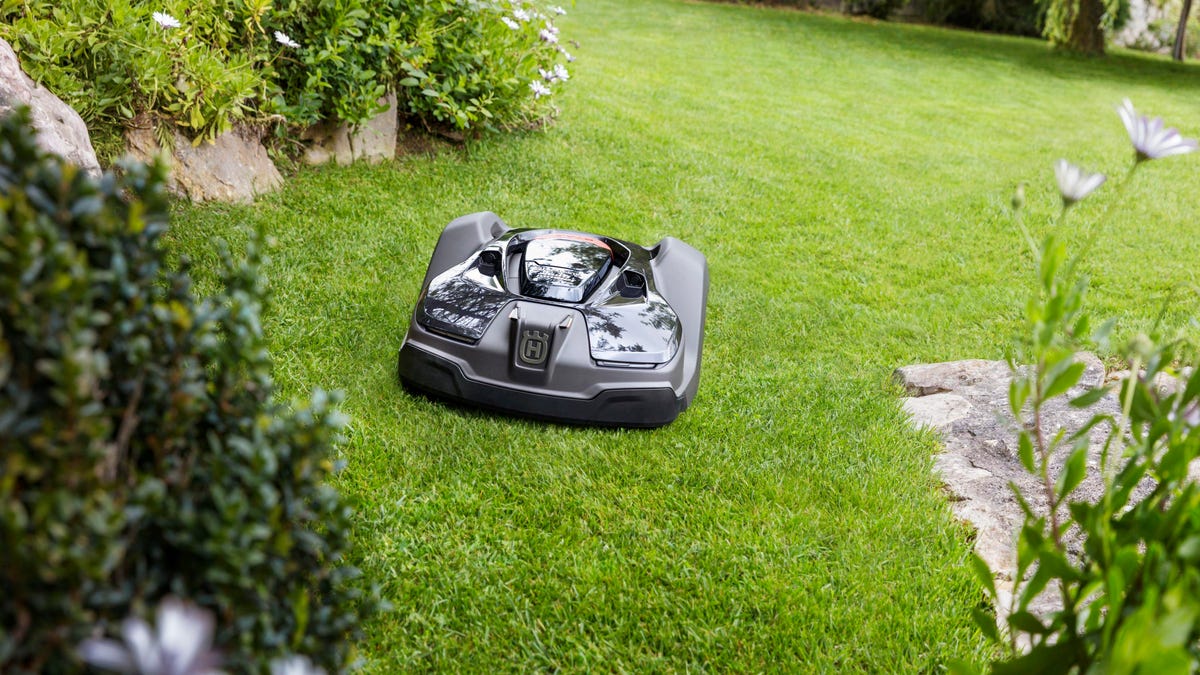Robotic lawn mowers get voice assistant, GPS upgrades
Battery-powered, automatic mowers have added connected features to make them more precise and easier for you to use.

Some models of the Husqvarna Automower have built-in GPS and will integrate with Amazon Alexa later this year.
You might not see them every day in the US, but robotic lawn mowers are becoming more popular worldwide -- one report estimates that sales of these automated gardeners will pass $2 billion (roughly £1.42 billion/AU$2.58 billion) by 2022.
Additions that make robotic lawn mowers integrate with the rest of your smart-home setup could make them more tempting: Companies have steadily added more features including GPS and the voice-activated assistants to give these high-cost products a bit more bang for their buck.
First, let's talk a bit about what to expect from your basic robotic lawnmower. Models vary in price, but typically start at about $900 (roughly £636/AU$1,160) and become more expensive depending on the size of your yard and the features you want included on the mower. They're not designed to turn a neglected yard into a an expanse that could rival a golf course. Rather, they're meant to maintain an already-tamed yard, similar to the idea of a robot vacuum.
In general, robotic lawn mowers are made up of three parts: the mower itself, a perimeter wire and a charging base. You install the perimeter wire along the edges of your lawn so the mower knows where to stop cutting. Next, you plug in the base and place the mower on it to charge. Then, the mower will cut your grass based on the options you select on the body of the mower or, in some cases, the mower's app.
Lately, companies have add integrations and technology to robotic lawn mowers that enable them to do more than just trim your grass:
- Voice commands: Getting a robot to mow your lawn is already a hands-off activity. But more robotic mowers have begun to work with voice-activated assistants. For example, LG Lawn Mower Robot's will work with Amazon Alexa and Google Assistant when it's released (it's still not clear when you'll be able to buy this mower), so you can tell your Alexa - or Google Assistant-enabled device to mow your yard with commands like, "Alexa, cut my grass" or "OK, Google, mow the lawn." And Husqvarna's Automower line of robotic lawn mowers will work with Alexa through the Automower Connect app beginning in September, so you can give the mowers instructions like, "Alexa, ask Automower to take a break" or "Alexa, ask Automower to start mowing the lawn."
- GPS: Perimeter wires keep your mower on your property, and the addition of GPS in robotic lawn mowers help them keep track of what parts of the yard have and have not been cut. Select Automowers from Husqvarna have GPS included in the mower, as does the forthcoming LG Lawn Mower Robot.
The addition of voice assistant integration and on-board GPS show that robotic lawn mowers are getting smarter about yard care. But are they necessary? Depends on what your needs are. Being able to give your mower voice commands through Amazon Alexa or Google Assistant is cool, but you probably won't need to use them much if you set your mower to an automatic mowing schedule. It would be more useful if you could ask Amazon Alexa or Google Assistant for information about what your mower is up to. For example, I'd like to be able to ask a voice assistant questions like, "How much of the yard does the mower have left to cut?" or "When does my next mowing cycle begin?" Receiving this information through a voice assistant is a feature that could help folks check in on their yard without having to open an app or guess the answer by looking at their lawn.
Added GPS, however, has clear use cases -- this feature helps locate mowers if someone tries to swipe them (keep in mind, most models have some type of anti-theft feature like an alarm that sounds when someone takes a mower off its base). For example, the GPS built into a Robin Autopilot robotic mower helped police find a model that someone had stolen from a Dallas yard.
Robotic lawn mowers are more popular in Europe than they are in the US, and the price is still out of reach for a lot of folks. But these bonus features could make robotic lawn mowers more worthwhile for folks who are already interested in this technology. If you're still on the fence, just hold tight while companies roll out better features and, eventually, lower prices.

